目次
Craft Report
A Comb that Embodies the Craft of 60-Year-Old Satsuma Boxwood
Founded in 1919 in Beppu City, Oita Prefecture, Beppu Tsuge Kogei has a long history of working with boxwood. Once known for making combs, hairpins, and netsuke, the workshop has shifted with the times. Today, in response to the spread of Western dress culture, it specializes in the making of “tsuge brushes.”
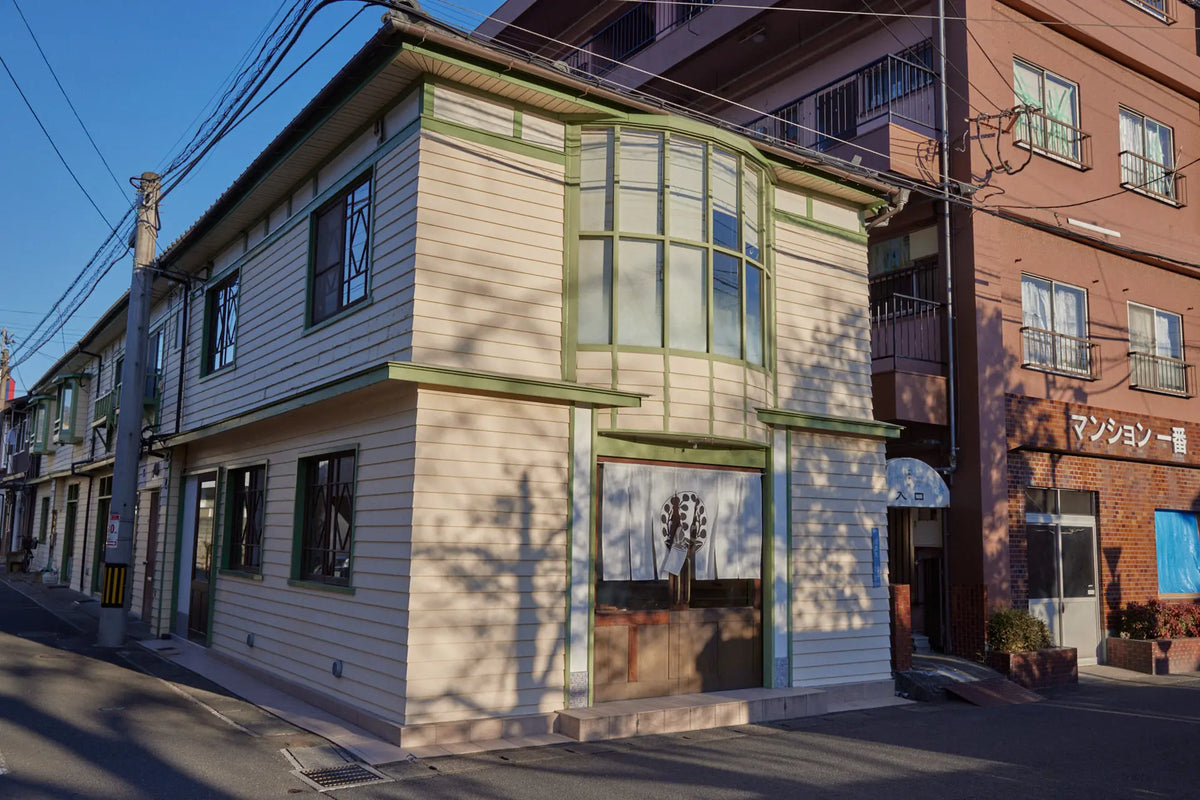
The workshop of Beppu Tsuge Kogei.
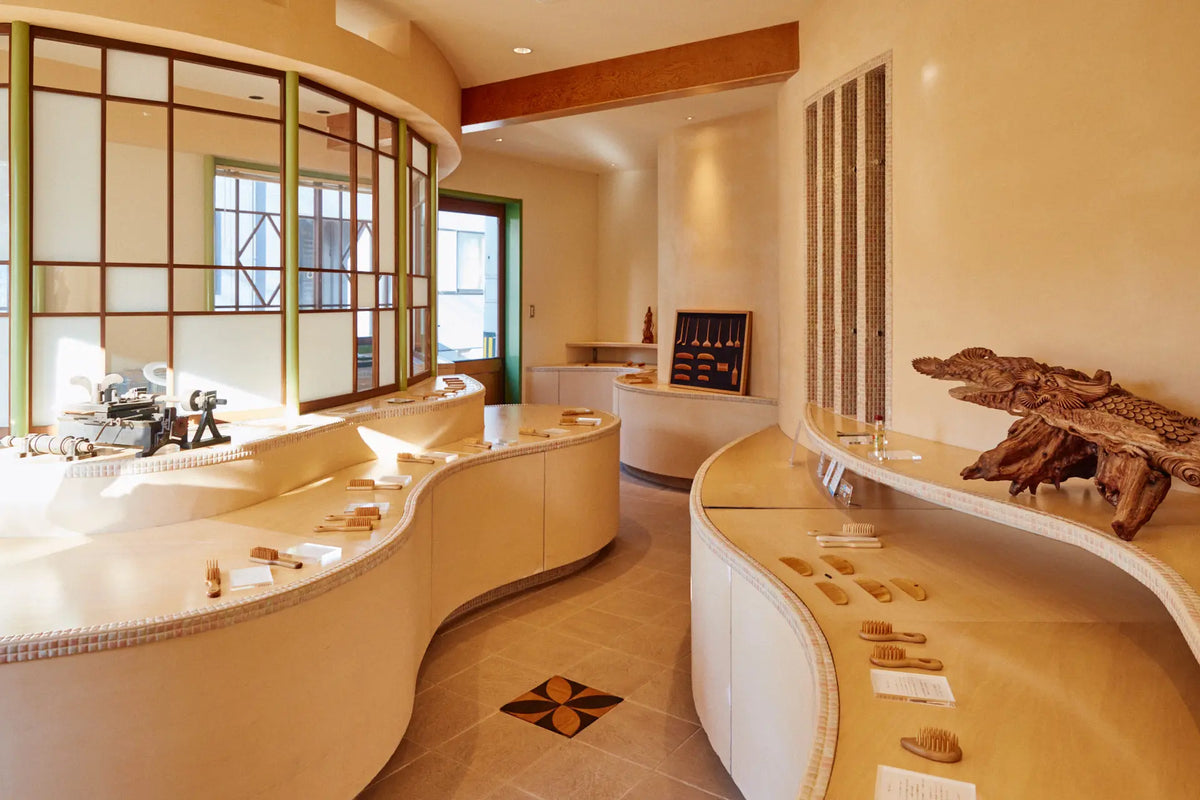
The gallery at the entrance of the workshop.
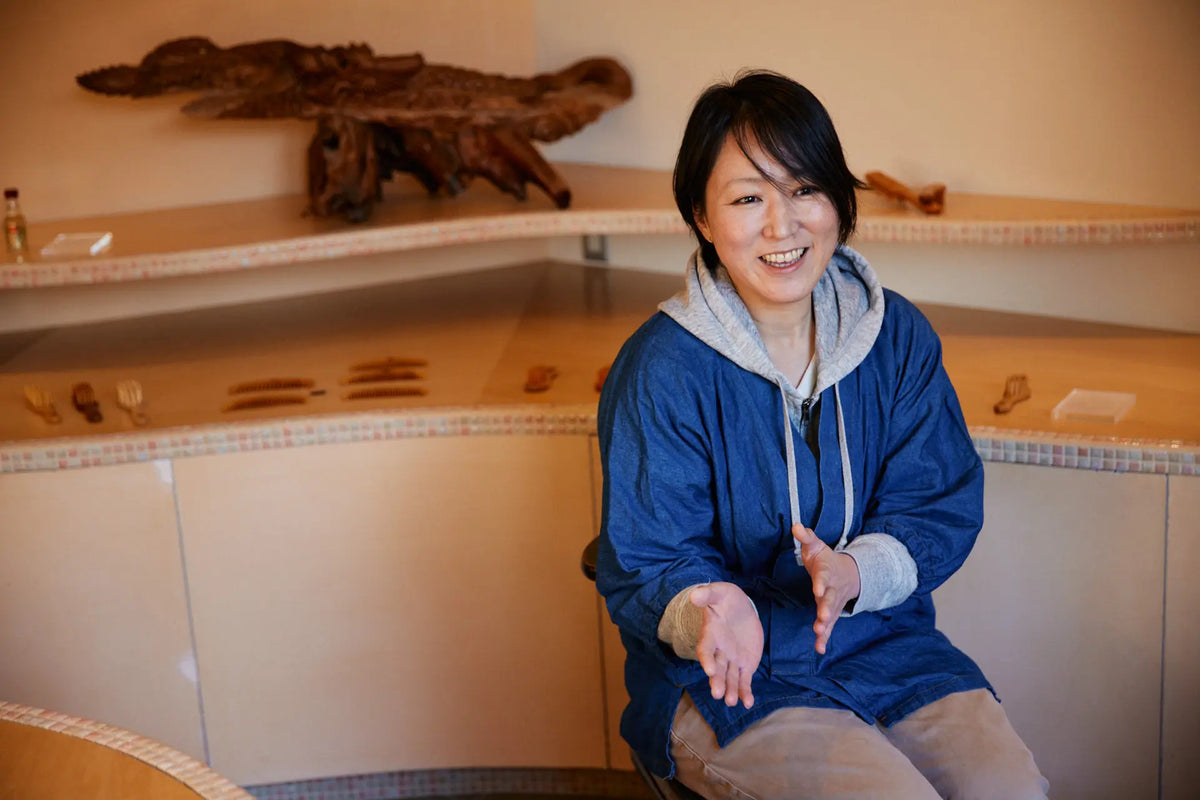
Ms. Kako Ando, who was interviewed.
The raw material, Satsuma boxwood, is extraordinarily slow-growing. Even after five years, a tree may be no thicker than a little finger. In places like Mt. Kosho in Fukuoka, it is so rare that it has been designated a Natural Monument and cannot be cut. At Beppu Tsuge Kogei, only boxwood aged over 60 years—prized for its fine grain, flexibility, and resilience—is used. Each brush is further infused with natural camellia oil from Tamana in Kumamoto. Over time, the oil gently seeps out from the wood, nourishing the hair with every use, leaving it smooth and lustrous. In winter, it prevents static electricity that causes split ends and breakage, while in the humid rainy season, it helps control frizz.
Guided by the belief that “times may change, but the value of tsuge remains the same,” the workshop continues to share the enduring appeal of boxwood in forms suited to modern life.
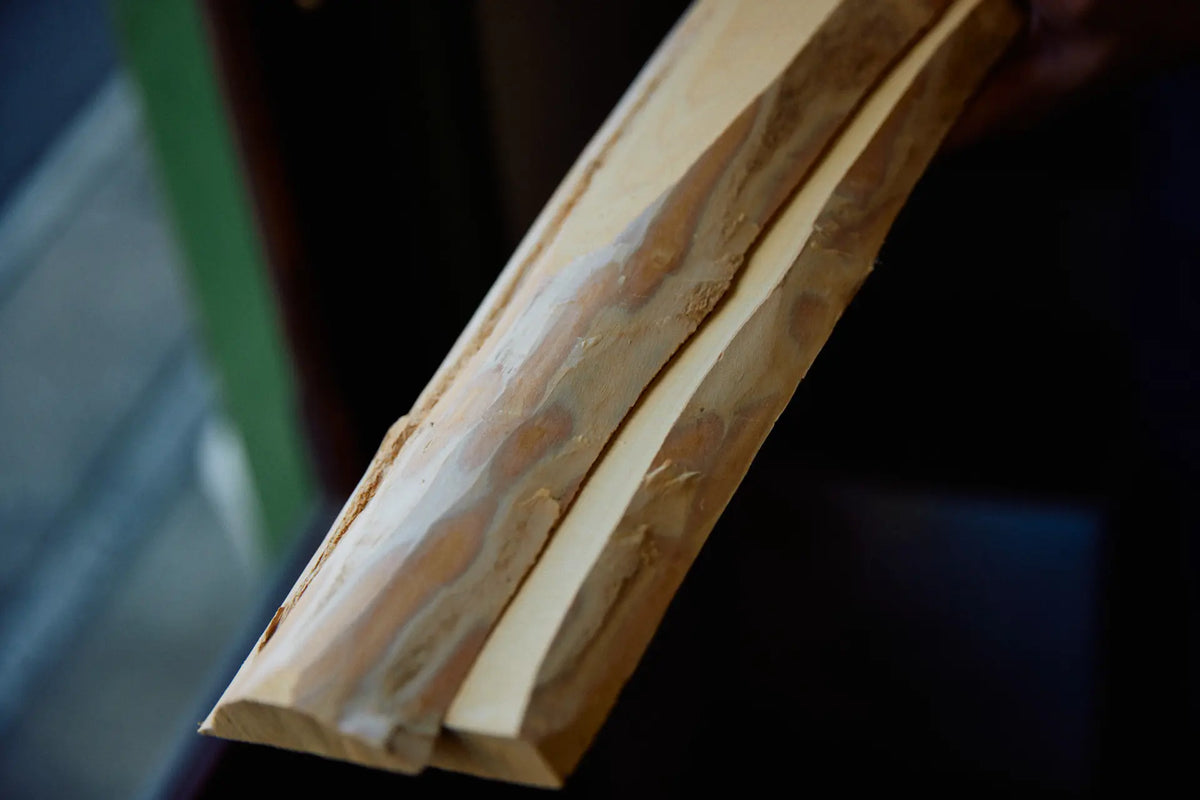
The boxwood used as the material for the boxwood brushes.
Precision that Works in Increments Smaller than 0.1 mm
The making of a tsuge brush begins with peeling and cutting the boxwood. Because the wood is so dense, cutting it produces a distinctive, high-pitched “kin” sound. Every knot and grain must be inspected carefully by eye to judge what parts can and cannot be used.
Each tooth of the brush is shaped one by one, tapering slightly at the tip and rounded for comfort. There are no molds; the process relies solely on the craftsman’s skill and eye, giving each tooth a subtle curve that allows it to glide smoothly through the hair.
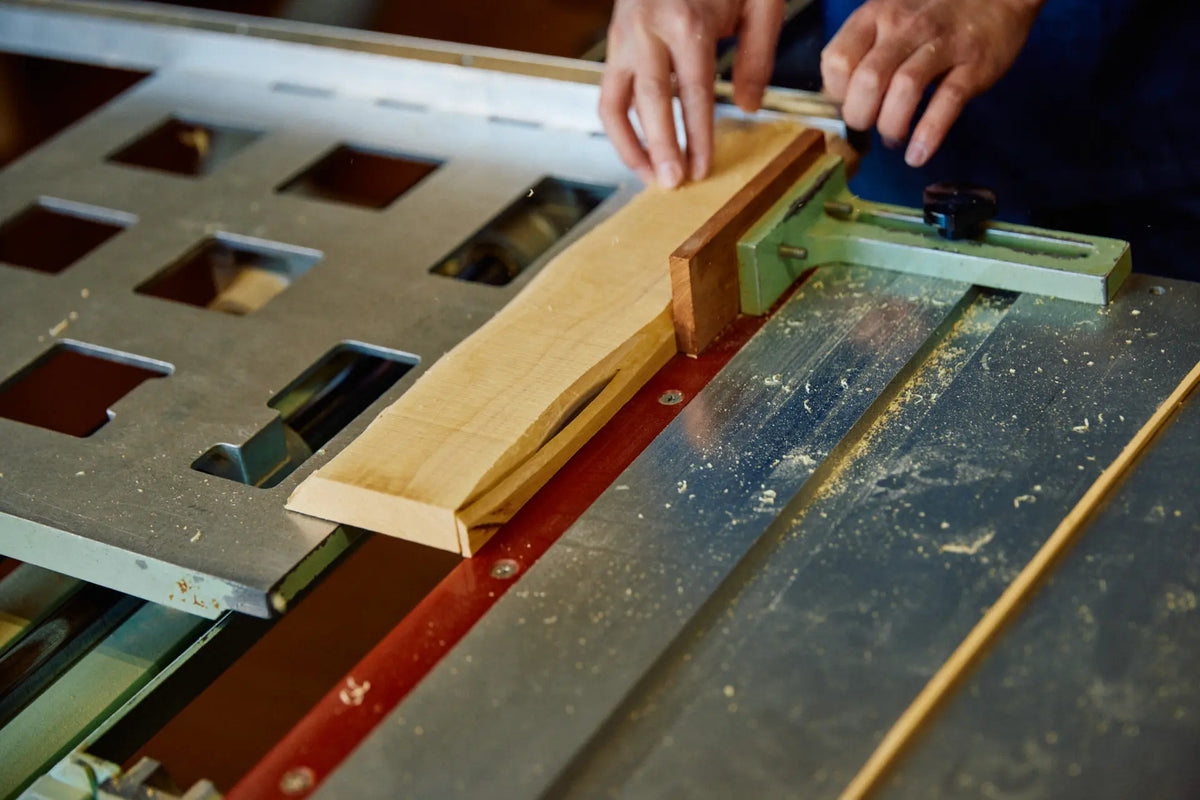
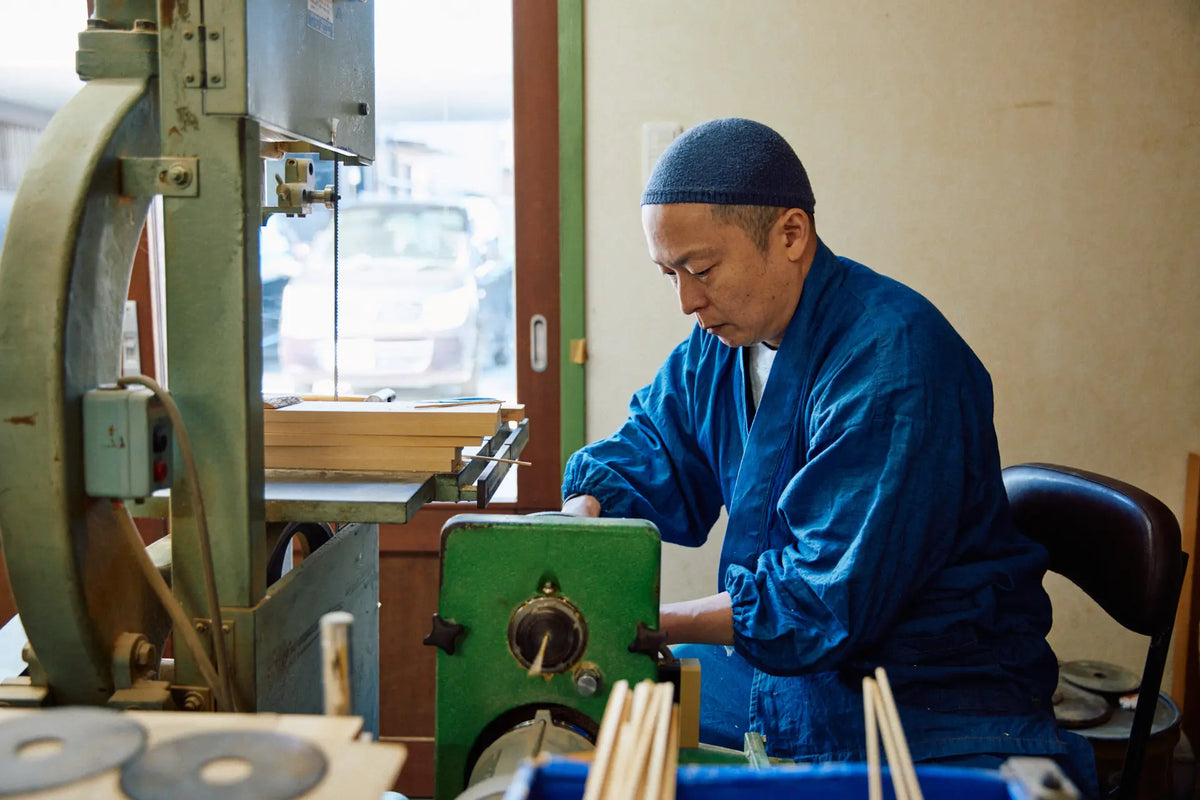
“The slightest difference in the tip of the tooth changes how it feels against the scalp,” explains Mr. Ando. “Even the smallest deviation can ruin the result, so every step requires extreme care.” Because wood naturally expands and contracts with humidity and temperature, inserting the teeth into the backplate demands adjustments finer than 0.1 mm. The craftsman’s pursuit of functionality and beauty extends to the tiniest details, making each brush a product of precision and mastery.

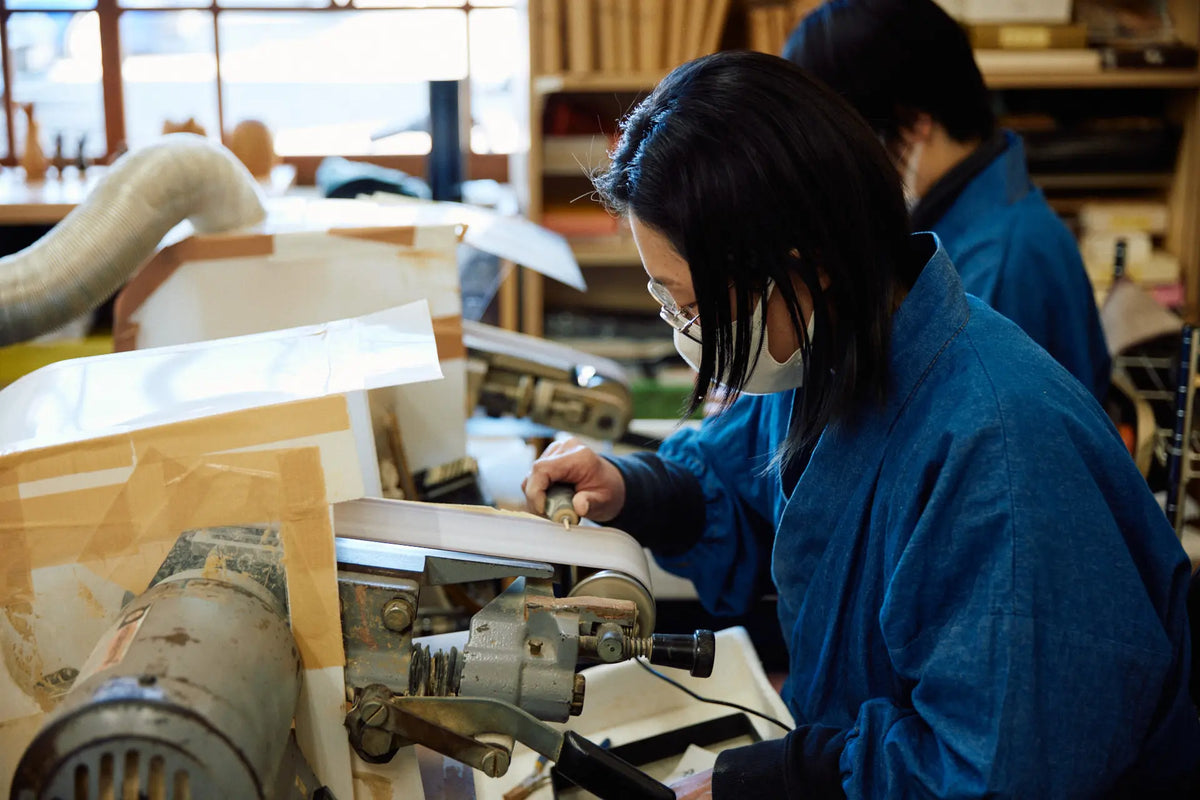
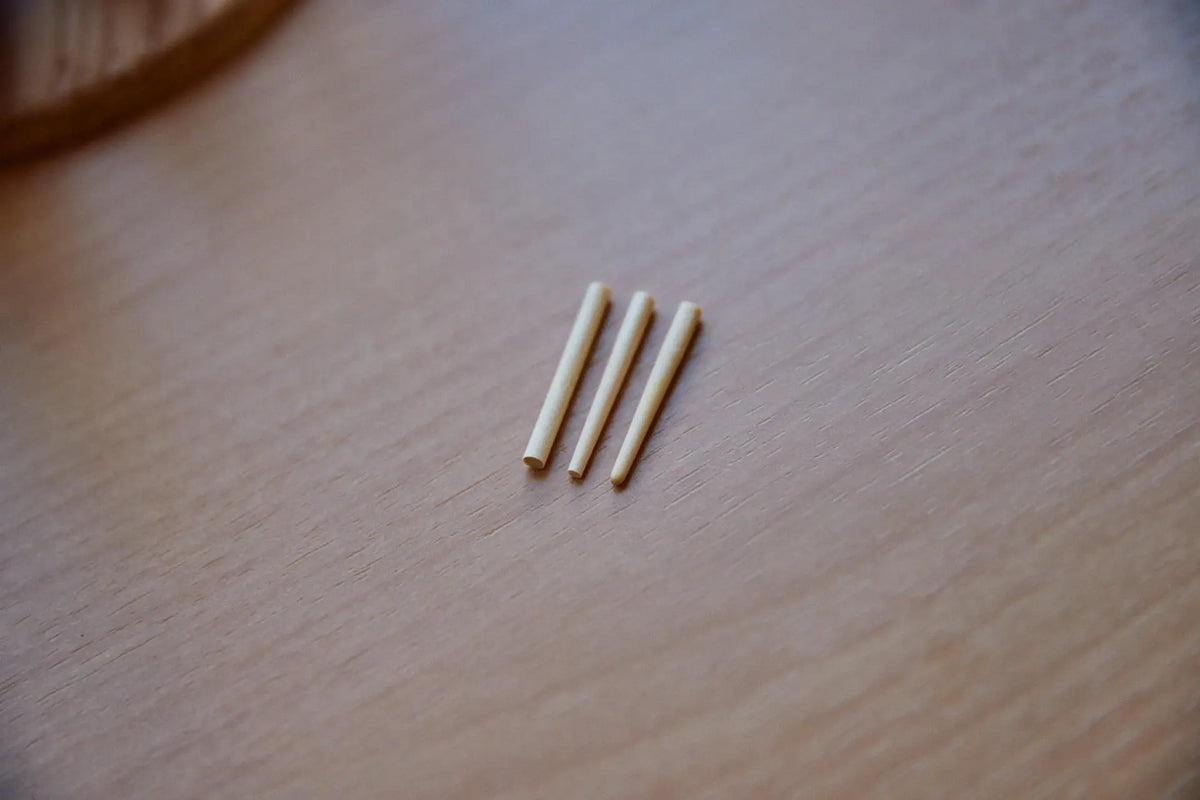
Left: The teeth of the brush before being shaped. Center: The tips are thinned. Right: Finally, the part that touches the scalp is rounded.
Over the past 20 years, improvements have been made in response to discoveries during production and feedback from customers. “Now, more than ever, we want to raise the quality of each brush. Even if it takes more time and effort, our goal is to create something that is truly comfortable to use,” says Ando. Achieving this requires delicate calculations, steady hands, and unwavering attention to the ideal final form—because with boxwood, once too much is shaved away, there is no going back.
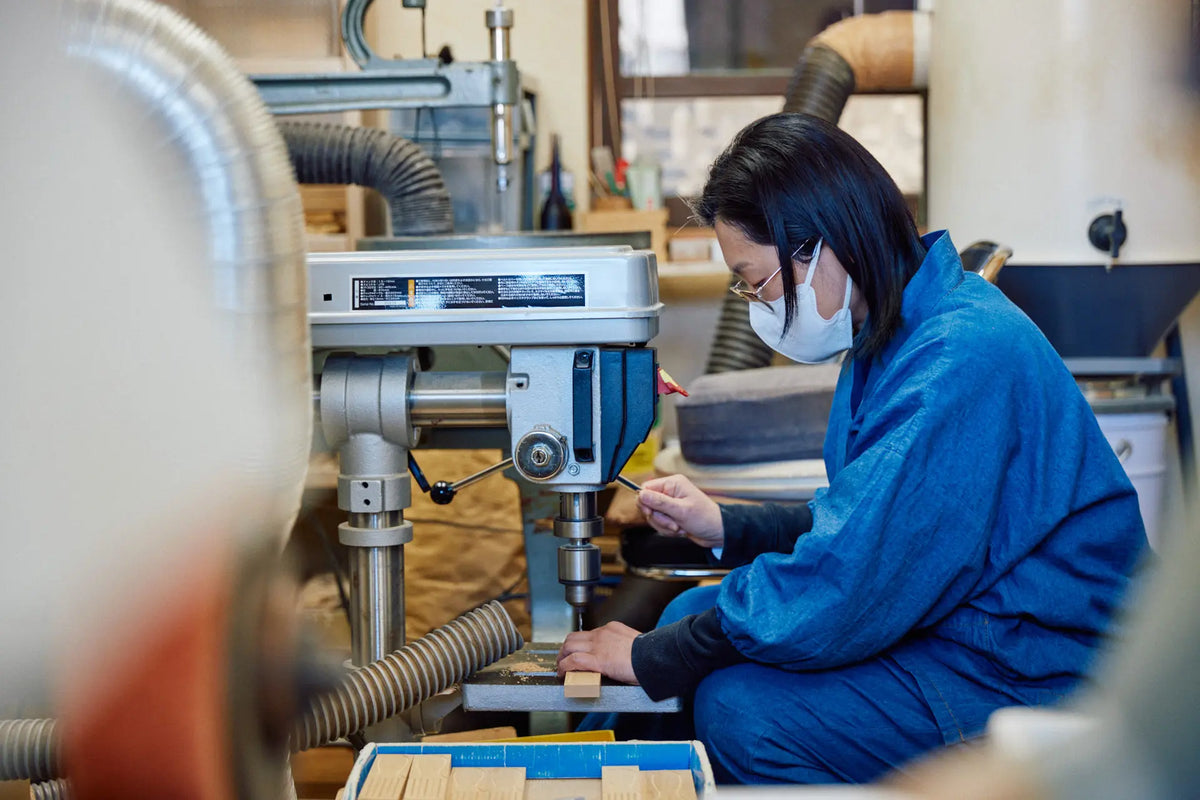
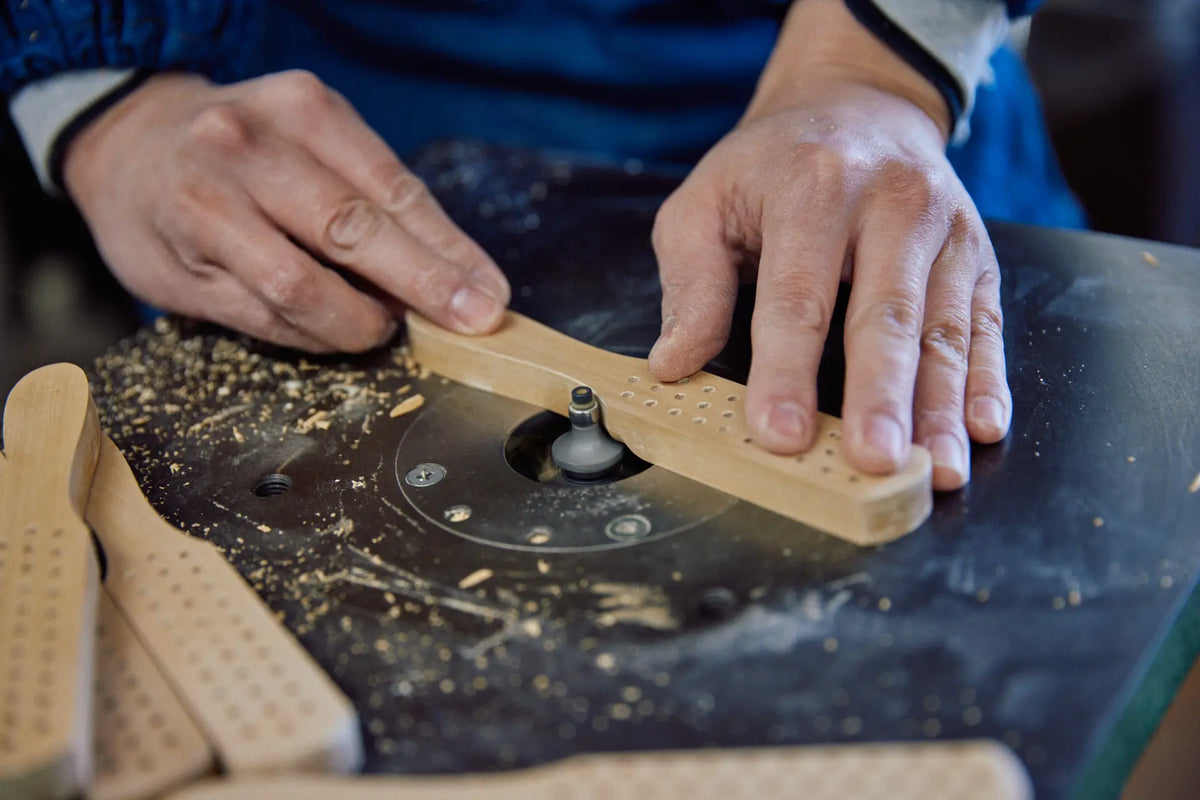

The process of inserting the teeth into the back of the brush. Since the color and thickness of the wood vary slightly, the teeth are inserted with a consideration for balance to ensure a cohesive overall appearance.
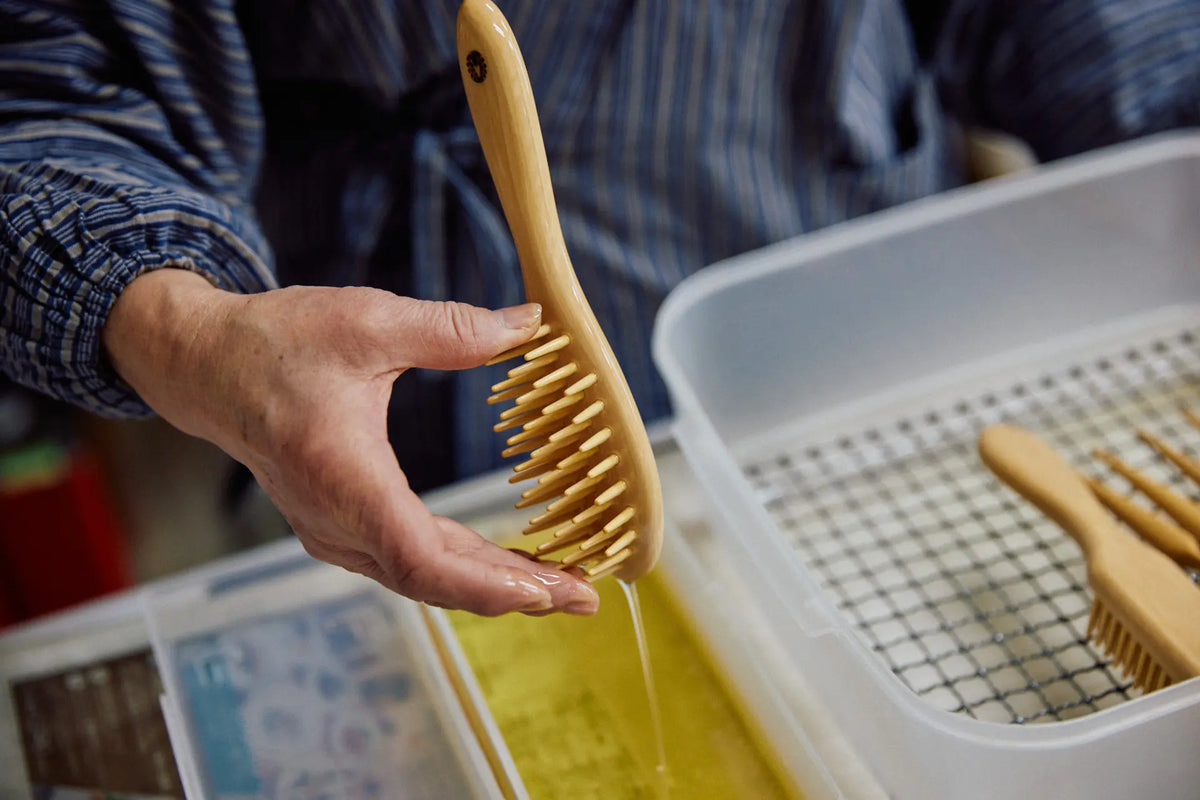
Finally, the brush, with all its teeth inserted, is soaked twice in camellia oil.[1] Soaking it in camellia oil not only prevents dirt but also changes its texture and color.
A Brush Made for Beautiful Hair—and for Its User
Ando, who joined the workshop after marriage, had previously worked in completely different fields such as teaching English and the restaurant business. Seeing tsuge brush-making for the first time, she recalls being shocked: “I never realized just how much work went into a single brush.”
Because she came in without preconceptions, she feels she can appreciate the value of tsuge brushes with fresh eyes. “Watching the way the color and luster deepen the more you use it—it moves me, precisely because I didn’t know it before. That sense of wonder is what I want to share with others.”
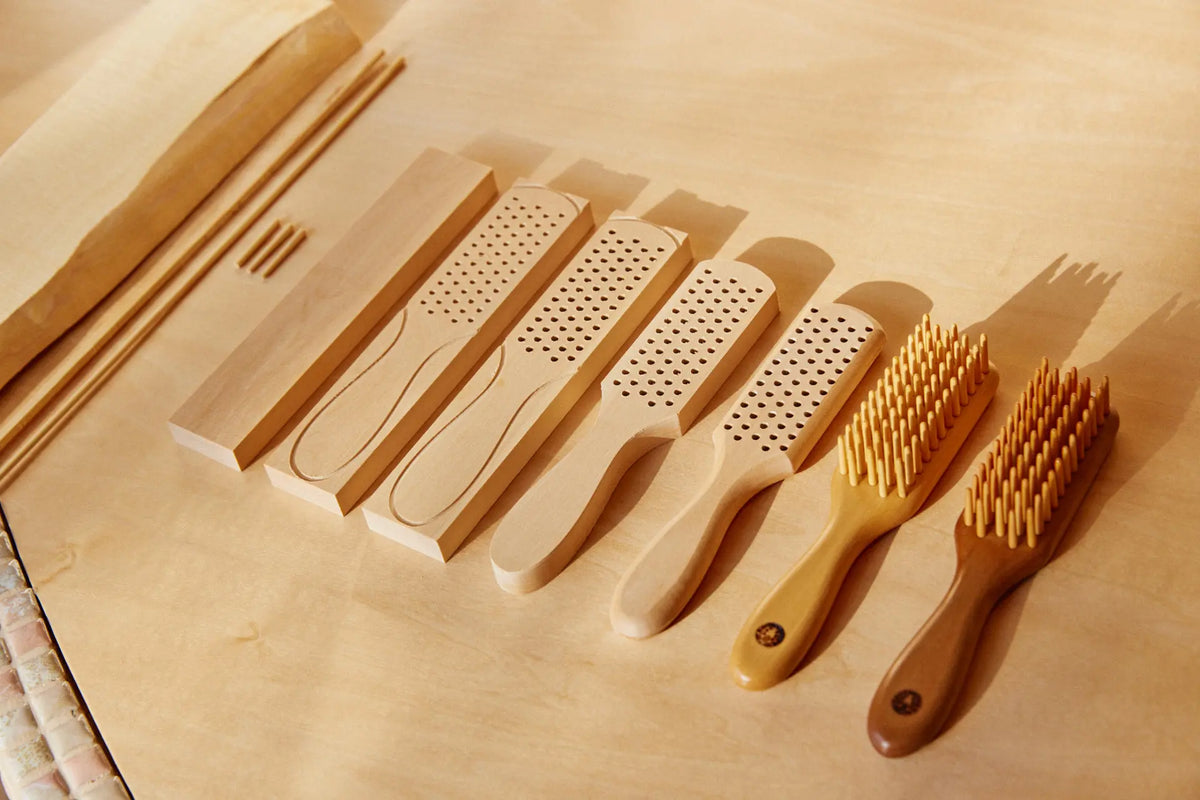
The process of making a brush from boxwood.
Boxwood has been used since the Manyo era (8th century), and the fact that it continues to be cherished today is proof of its timeless worth. While Beppu was once home to many tsuge workshops, only a handful remain today, as aging craftsmen retire. The difficulty of carrying on the tradition is real, yet it also fuels the determination to preserve it.
At Beppu Tsuge Kogei, customer needs are always at the center. The teeth of the brush are arranged in a fan shape to follow the curve of the head, and handles are redesigned for those with weaker grip strength. By listening closely to users and refining the craft together with artisans, the workshop creates brushes made with people in mind.
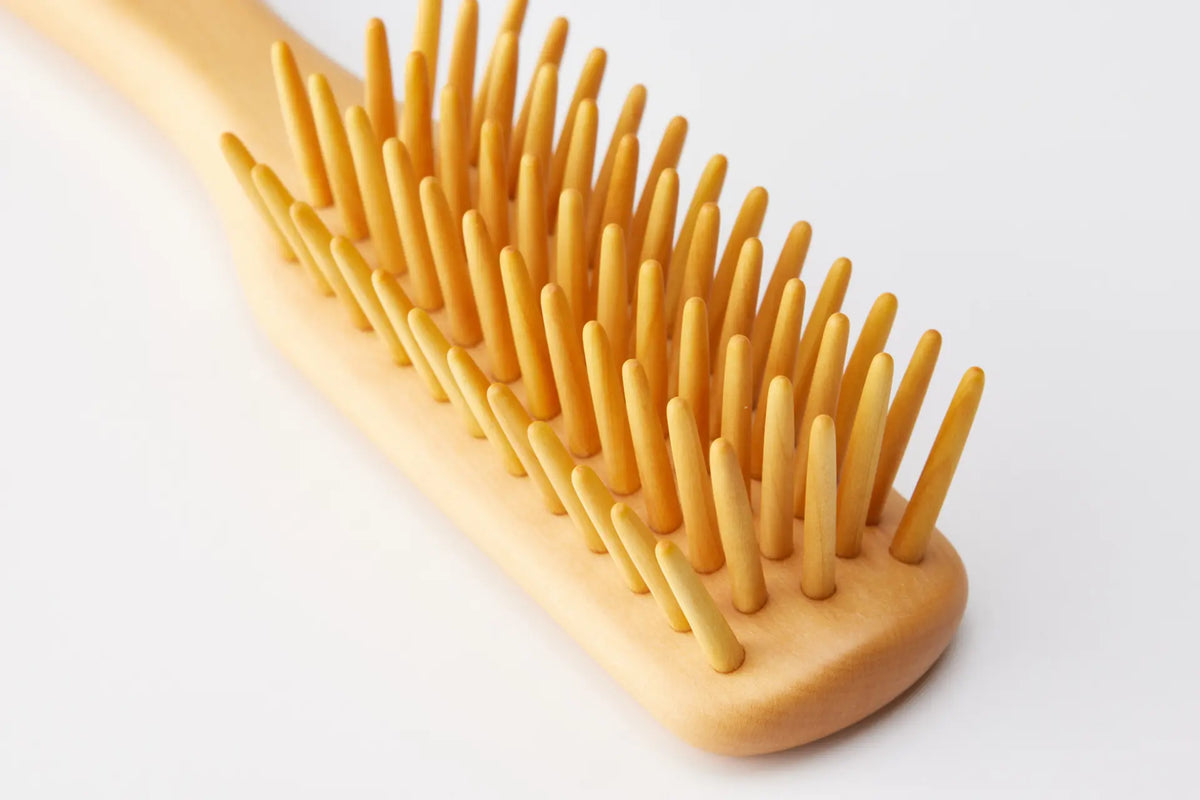
A brush with its teeth spread out in a fan shape.
Infused with camellia oil, each Satsuma boxwood brush adds natural shine with every stroke, supporting those troubled by split ends, dryness, or frizz on rainy days. Over time, its color deepens, its luster grows, and it molds itself to your hand.
A tsuge brush ages gracefully with its user, becoming more beautiful with the years. Why not welcome that quiet elegance into your daily life?
Reporting by Takuya ArataPhotography by Daiki MorishitaWritten by Emiko Shimono





